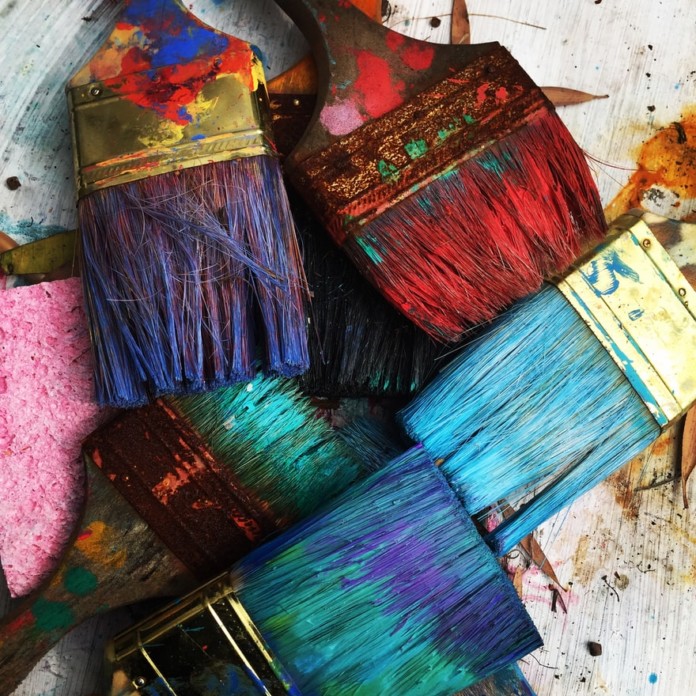Whether it’s drawing, painting or photography, many of us like to pass our time with artistic hobbies. But after the work is done, we seldom think about the next stage. It is commendable to unleash your creativity onto canvas, or snap the perfect still shot through a long lense, but if it’s not displayed in a manner worthy of your exploits, you’re selling yourself short. So, to make sure this doesn’t happen, here are four ways you can ensure the work you produce is presented in an optimal way.
- Frame it
You’ve put your heart and soul into a canvas painting. You’ve put time in. You’ve even put blood, sweat and paint in (maybe even literally). So, now what? Well, you frame it of course. Whether you want to hang it up on your own wall, gift it to a friend, or display it in an exhibition, framing your artwork is an essential part of its journey to the eyes of others. It just won’t look right otherwise.
Artists have understood the power that the right frame can have in presenting and enhancing their work for centuries. Whether it’s adding contrast, tonality, a deeper, structural presence, or simply ensuring an appropriate level of protection, frames can make or break artwork. If you need some advice on choosing the best frame possible for your art, framing company Soho Frames have put together a handy framing guide exploring the topic, ensuring that your work is in the optimal casing.
- Create an online portfolio
The virtual world is as real as the physical one these days. This means displaying your work in an online format is not only useful for your own recollection and organisation, but also to show your work off to others. Sending a URL link is a lot easier than lugging several canvases about, that’s for sure.
The first thing you can do is create a social media profile, such as Instagram, to post your work. You don’t have to stress about growing a following or anything, but having all your art on one neat profile is an ideal way to create a foundational online showcase. Another tip is to not be afraid of positing the same piece of work twice. Your creations deserve a longer lifespan than the 12 hours Instagram allows it on the feed, so don’t be fooled into thinking your art is only valuable when it’s new. People want to see it again, so don’t hesitate to post your work again and again.
If you want to go a step further, you may want to consider creating a professional website. Using a paid builder such as Squarespace or Wix is the best way to build a clean and elegant website that’s worthy of your pieces. It will ensure they look the part among an abundance of other artists doing the same.
- Print it on something
Now this is cool. If you’ve ever wanted to see what it would be like to have your art on inanimate objects, whether it be t-shirts, phone cases, or bottles, it’s now very possible for you to make it happen. T-shirts are perhaps the most optimal of these formats to print, especially if you’re considering selling them.
It’s important however, to make sure the quality of the t-shirt is suitable. If you’re doing it with an online print-on-demand service, such as Printful or Printify, try your best to select organic cotton. Or to be super creative, buy plain second-hand shirts and go to a local print-shop. All in all, be aware of the amount of naff quality clothes being discarded and the damage this has on the environment. If you’re going to print t-shirts, do it right. Make them durable and worth keeping — your art (and the planet) deserves it.
- Turn it into an NFT
Before you ask the inevitable question, bear in mind this is a wildcard option but one which could be incredibly fruitful should you do it right. What was your question? Oh yeah, ‘what on Earth is NFT art?’. Essentially, NFTs are online art that can be bought and sold using Ethereum (a cryptocurrency).
Rather than extending this article into a 2,000 word document on blockchain technology and hash codes and Elon Musk memes, we’d invite you to go down the rabbit hole yourself. Start here, which will tell you all about the ridiculous amount of dollars being spent on cryptopunks, a collection of digital pieces created by John Watkinson and Matt Hall by playing around with a pixelated character generator. These virtual artworks are now being sold for millions of dollars. Yep, you heard that right. People are paying millions for the possession of a JPEG. If this is something you yourself would like to get involved in, checkout the various marketplaces for other NFT trends that are making waves. You may just get inspired.




